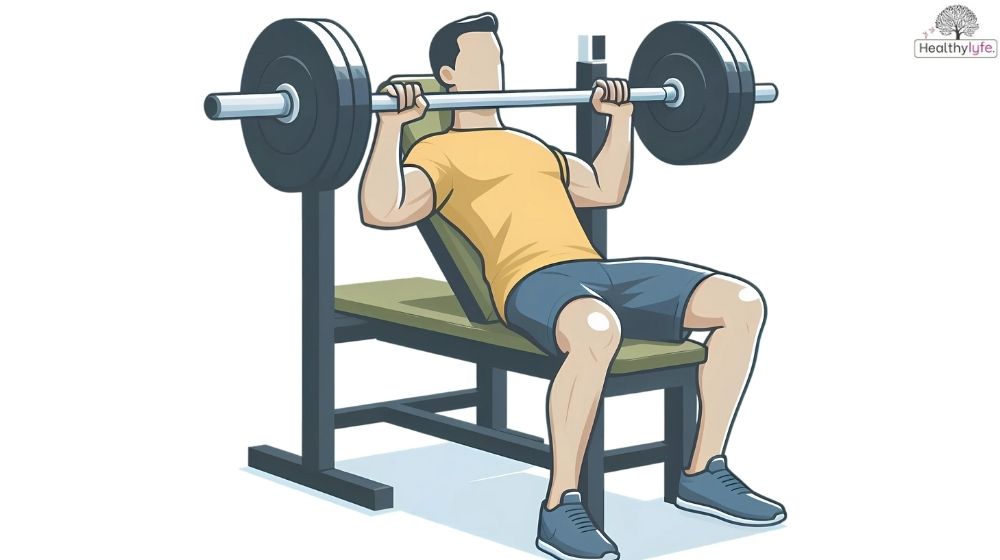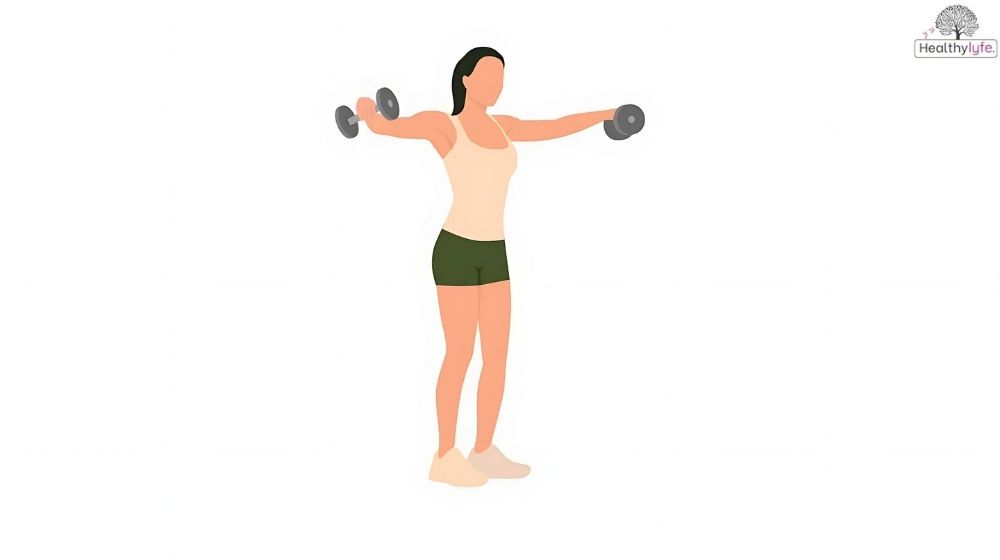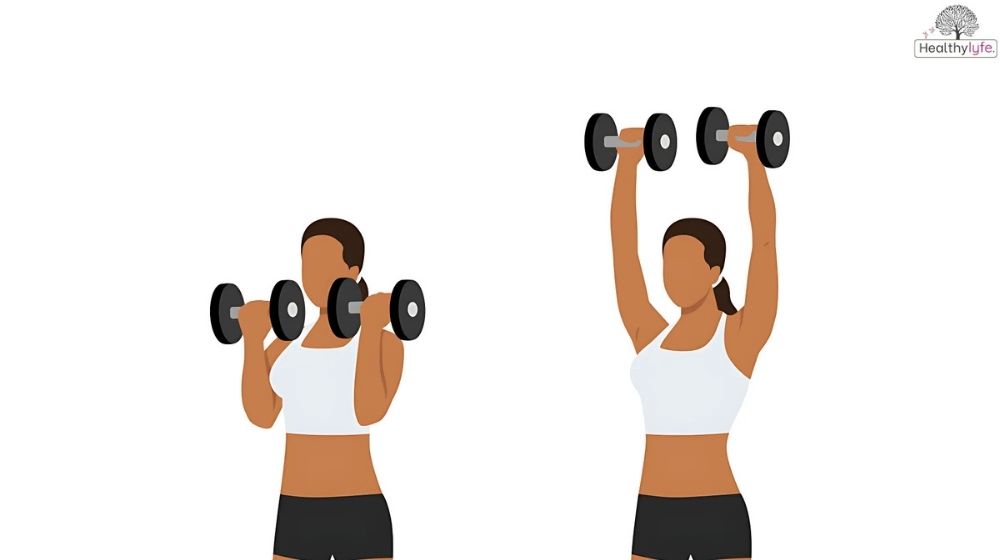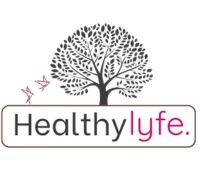Ready to build stronger shoulders? Try these top 5 Workouts for Shoulders and see the difference in 2024!
Introduction
Want to build strong, defined shoulders that not only look impressive but also enhance your overall strength and stability? Shoulder workouts are crucial for developing balanced upper body strength, improving posture, and preventing injuries. Whether you’re a beginner or a seasoned athlete, incorporating effective shoulder exercises into your routine can yield fantastic results. In this guide, we’ll explore the best five workouts for shoulders that can help you achieve your fitness goals.
Overhead Press

Benefits
The Overhead Press is a powerhouse for shoulder development. It targets the deltoid muscles, specifically the anterior and lateral heads, while also engaging the triceps and upper chest. This exercise improves strength and stability, making it essential for functional fitness and daily activities.
How to Perform
- Start Position: Stand with your feet shoulder-width apart and hold a barbell or dumbbell at shoulder height.
- Execution: Press the weight overhead until your arms are fully extended.
- Lower: Slowly lower the weight back to shoulder height.
Tip: Keep your core engaged and avoid arching your lower back to ensure proper form.
Common Mistakes
- Excessive Arching: This can strain your lower back. Keep your core tight to prevent this.
- Incomplete Range of Motion: Ensure you fully extend your arms at the top of the movement.
Lateral Raises

Benefits
Lateral Raises focus on the lateral deltoid muscles, which are crucial for widening your shoulders and giving them a rounded appearance. This exercise helps in achieving that V-shaped torso and enhancing overall shoulder width.
How to Perform
- Start Position: Stand with a dumbbell in each hand, arms at your sides.
- Execution: Lift the weights out to the sides until your arms are parallel to the ground.
- Lower: Slowly bring the weights back to your sides.
Tip: Keep a slight bend in your elbows throughout the movement to reduce strain on the joints.
Variations
- Seated Lateral Raises: Reduces momentum and isolates the deltoid muscles more effectively.
- Cable Lateral Raises: Provides constant tension throughout the range of motion.
Front Raises

Benefits
Front Raises primarily target the anterior deltoids, helping to build strength and definition in the front part of your shoulders. This exercise is excellent for enhancing shoulder flexion and stability.
How to Perform
- Start Position: Stand with feet shoulder-width apart, holding a barbell or dumbbells in front of your thighs.
- Execution: Raise the weights straight up in front of you until they reach shoulder height.
- Lower: Slowly bring the weights back down.
Tip: Use a controlled motion to avoid swinging the weights and minimize risk of injury.
Common Mistakes
- Using Too Much Weight: This can compromise your form and reduce effectiveness. Start with a lighter weight to master the form.
- Swinging: Avoid using momentum to lift the weights; focus on muscle engagement.
Face Pulls

Benefits
Face Pulls are fantastic for targeting the rear deltoids and upper back, which are often neglected in many shoulder routines. This exercise improves posture and balances shoulder development by strengthening the posterior chain.
How to Perform
- Start Position: Set the cable machine to a high position and attach a rope handle. Grab the rope with both hands, palms facing down.
- Execution: Pull the rope towards your face, flaring your elbows out to the sides.
- Return: Slowly extend your arms back to the start position.
Tip: Focus on squeezing your shoulder blades together at the end of the movement for maximum engagement.
Tips for Effectiveness
- Controlled Movement: Perform the exercise slowly to maintain tension on the target muscles.
- Proper Grip: Use a neutral grip (palms facing each other) if it feels more comfortable.
Arnold Press

Benefits
The Arnold Press, named after Arnold Schwarzenegger, combines the benefits of a traditional shoulder press with a rotation that engages all three deltoid heads. This variation increases the range of motion and overall muscle activation.
How to Perform
- Start Position: Sit or stand with dumbbells held in front of your shoulders, palms facing you.
- Execution: Press the dumbbells overhead while rotating your palms to face forward.
- Lower: Reverse the motion to return to the start position.
Tip: Perform this exercise with a moderate weight to avoid straining your shoulders.
Common Mistakes
- Excessive Weight: Avoid using weights that are too heavy, which can compromise form and lead to injury.
- Improper Rotation: Ensure a smooth rotation of the wrists to engage the deltoids fully.
Diet Plan for Shoulder Growth [1]
If you’re aiming to build stronger, more defined shoulders, your workout routine isn’t the only thing that matters. A well-rounded diet plan is crucial for muscle growth and overall shoulder health. Eating the right foods ensures your body has the nutrients it needs to repair and build muscle, enhance recovery, and support your fitness goals. In this article, we’ll dive into the essential nutrients, provide a sample meal plan, discuss hydration and recovery, and explore supplements that can help you achieve optimal results.
Key Nutrients for Shoulder Health
Protein
Protein is the building block of muscle. For shoulder growth, aim to include a source of high-quality protein in every meal. Proteins like chicken, turkey, fish, eggs, and plant-based options such as beans and lentils are excellent choices. Protein helps repair muscle fibers broken down during workouts and promotes muscle growth.
Tip: Try to consume about 1.2 to 2.2 grams of protein per kilogram of body weight daily, depending on your activity level and fitness goals.
Healthy Fats
Healthy fats are vital for hormone production, including hormones like testosterone that play a role in muscle growth. Incorporate sources of unsaturated fats such as avocados, nuts, seeds, and olive oil. Fat also helps with joint lubrication, which is beneficial for maintaining shoulder health.
Tip: Aim to get around 20-35% of your daily calories from healthy fats.
Carbohydrates
Carbohydrates provide the energy needed for intense workouts. Opt for complex carbs like whole grains, fruits, and vegetables. These carbs release energy slowly, ensuring sustained performance and recovery. Carbohydrates also help replenish glycogen stores depleted during exercise.
Tip: Include a good balance of carbs in your diet, particularly around your workout times to maximize energy and recovery.
Sample Meal Plan
Breakfast
- Omelette with Spinach and Tomatoes: Packed with protein from eggs and vitamins from spinach and tomatoes.
- Whole Grain Toast: Provides complex carbohydrates for sustained energy.
- Greek Yogurt with Berries: A mix of protein and antioxidants for muscle recovery.
Lunch
- Grilled Chicken Salad: Includes lean protein from chicken and a variety of vegetables for vitamins and minerals.
- Quinoa: A complete protein and source of complex carbs.
- Avocado Slices: For healthy fats.
Dinner
- Baked Salmon: Rich in protein and omega-3 fatty acids, which are good for muscle recovery and joint health.
- Sweet Potato: A great source of complex carbohydrates and vitamins.
- Steamed Broccoli: Provides fiber and essential nutrients.
Snacks
- Protein Shake: Convenient way to increase protein intake, especially post-workout.
- Mixed Nuts: Good source of healthy fats and protein.
- Hummus with Veggies: Combines protein and fiber for a satisfying snack.
Hydration and Recovery
Importance of Hydration
Staying hydrated is essential for muscle function and recovery. Water helps transport nutrients to muscle cells, remove waste products, and maintain overall performance. Aim to drink at least 8-10 glasses of water per day, and more if you’re engaging in intense workouts.
Tip: Consider drinking an electrolyte-rich beverage post-workout to replenish lost minerals.
Recovery Foods
Incorporate foods that aid in muscle recovery, such as those rich in protein and antioxidants. Foods like berries, nuts, and lean meats can help reduce inflammation and speed up recovery.
Tip: A post-workout meal or snack with a mix of protein and carbs can enhance recovery and muscle growth.
Supplements for Shoulder Growth
Whey Protein
Whey protein is a fast-digesting protein that helps build muscle and repair tissues. It’s an excellent supplement for post-workout recovery.
Tip: Choose a high-quality whey protein with minimal additives for best results.
Omega-3 Fatty Acids
Omega-3s, found in fish oil supplements, help reduce inflammation and support joint health. This can be particularly beneficial for maintaining shoulder health.
Tip: Aim for a supplement that provides at least 1,000 mg of omega-3s per serving.
Branched-Chain Amino Acids (BCAAs)
BCAAs support muscle recovery and reduce muscle soreness. They can be taken before or after workouts to aid in muscle repair and growth.
Tip: Look for BCAA supplements with a 2:1:1 ratio of leucine, isoleucine, and valine for optimal benefits.
Tips for Optimal Results
Consistency is Key
Stick to your diet plan consistently. Building muscle and achieving shoulder growth takes time and dedication, both in the gym and at the dinner table.
Balance Your Diet
Ensure a balanced intake of proteins, fats, and carbohydrates. Avoid overly restrictive diets that could lead to nutrient deficiencies.
Listen to Your Body
Pay attention to how your body responds to different foods and adjust your diet as needed. Everyone’s nutritional needs are unique, so tailor your plan to what works best for you.
Conclusion
Incorporating these five shoulder workouts into your fitness regimen will help you build strong, well-defined shoulders and enhance your overall upper body strength. Remember, consistency is key, and proper form is crucial to avoid injury and maximize results. So, mix these exercises into your routine and watch your shoulder strength and definition improve over time.
FAQs about Workouts for Shoulders
How often should I do shoulder workouts?
Aim for 1-2 times per week, allowing at least 48 hours between sessions for muscle recovery.
Can I perform these exercises with body weight?
While some shoulder exercises can be adapted for body weight, using dumbbells or a barbell provides more resistance and better results.
What is the best rep range for shoulder exercises?
For muscle growth, aim for 8-12 reps per set. For strength, 4-6 reps with heavier weights are effective.
Should I warm up before shoulder workouts?
Yes, a proper warm-up is essential to prepare your shoulders for the workout and reduce the risk of injury.
Can beginners perform these shoulder exercises?
Absolutely! Just start with lighter weights and focus on mastering the proper form before increasing the weight.
By healthylyfe


